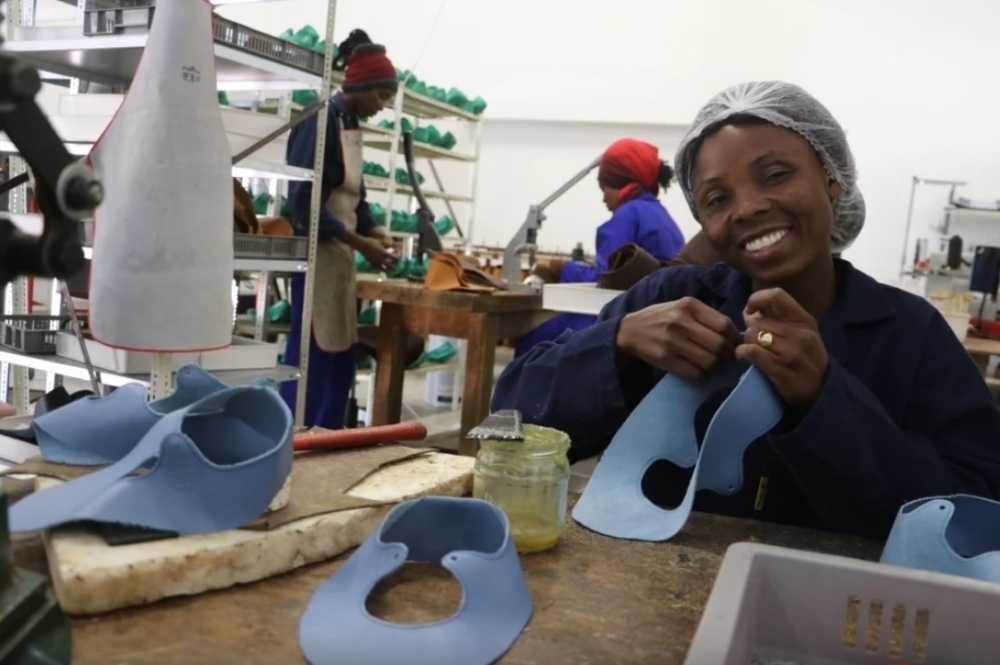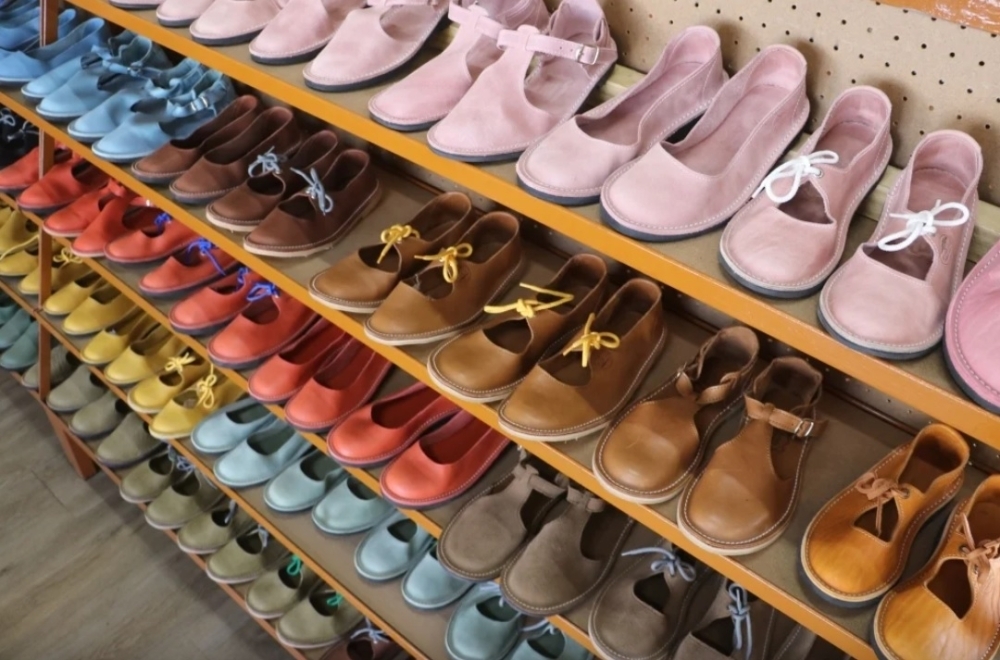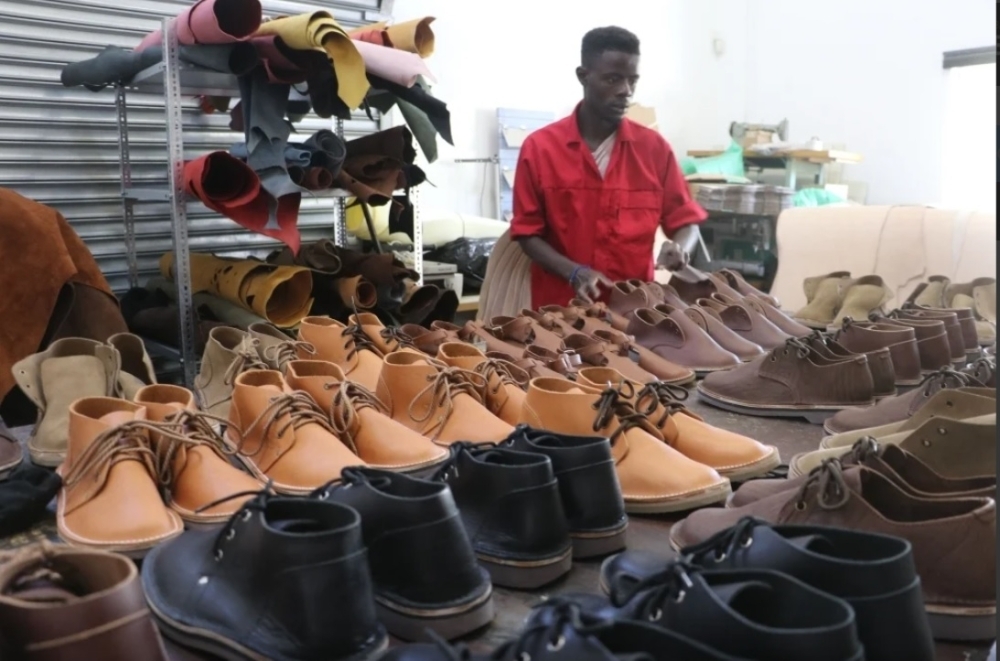Leather shoes to pick and choose
You can even do it yourself!
“Working with leather actually arose out of necessity. I earned N$45 as a trainee diesel mechanic, which was not a lot of money. Then I started making and selling leather products like belts and hats to generate an extra income to keep my head above water,” says Gerhard Baufeld, owner of Leather Connection in the capital.Gerhard was born and raised in Otjiwarongo, completed matric in Tsumeb and then joined the army. “Then I studied at the Neudamm Agricultural College for two years because I wanted to farm. However, over time, that dream died a quiet death. I started studying to become a diesel mechanic, and then met and married my wife. We have three children who all have children of their own and are scattered all over the world.”
It was during his time as an apprentice that his interest in leather and leather products rekindled.
“My interest in leather comes from my mother and my early childhood. She always had a container in which pieces of leather and equipment for leather work were kept. As a child, I often worked with leather; even if it was just to make a ‘kettie’. I learned everything from books. In those days there was no such thing as Google or YouTube; you read and you learned!”
In 2001, Gerhard and his wife, Henriette, decided to open Leather Connection. “At first we made leather moccasins for the American market. Unfortunately, the agent who took the shoes to America didn’t return and it fell flat. It was a major expense and loss that we suffered.”
Still, Gerhard decided to keep the equipment and leather for cobblers.
“Then we took over the Leather and Associated Industries Namibia training centre and we started doing repairs at the workshop. We repaired leather products, mostly handbags, bags and horse riding equipment. We also made some vellies and sandals, but this didn’t last long.”
Gerhard worked at the Swakopmund Tannery with Ewald Schier for a while and he was sent to South Africa to participate in a course to design shoes. “As part of the course, I worked at the Jordan shoe factory in Cape Town, so I got to know the machines. I learned which machine does what. In this way the foundation was laid for the shoes we now make at Leather Connection.”
Own designs
Gerhard started designing shoes in 2019 and bought the machines to start production at the beginning of 2020. But then Covid-19 put his plans in jeopardy.
“Businesses closed and people were sent home for five weeks. I sneaked into the factory and made the prototypes so we could start production when we were allowed to work again. And that's exactly what we did.”
Originally, the idea was to make the vellies for the tourist market, but with the borders closed due to the pandemic, the tourists stayed away. Thankfully, “Namibians supported us enormously during this time and carried us through the pandemic”.
Leather Connection doesn't just make traditional vellies: For men, there is the Bushboot which is an ankle boot with a very thick sole. “Since the boot has a thick sole, you can walk for miles without your feet hurting. The shoe is popular among security guards and members of anti-theft units. We also make a regular shoe for men that is based on the traditional vellie.”
The men's shoes are mainly made in traditional colours of tan, brown and black, but olive green, light blue or a denim blue are also possible.
For the ladies, in addition to normal shoes and vellies, sandals are also made.
“We also make what we call the Anja shoe. My sister-in-law saw the shoe and sent a photo and asked if we could make it – and we could! We also make school shoes for girls, as well as shoes for children from the age of three. It is especially popular among mothers and daughters to wear the same shoes in the same colour,” he says.
The ladies’ shoes can be made in 17 different colours. They are made from seal, cow or game leather such as oryx, kudu, wildebeest or hartebeest.
Leather Connection currently makes up to 50 pairs of shoes a day.
Create your own vellies
What makes Leather Connection special is that you can contact them to make your own pair of vellies.
“All you need to do is come in and fit a pair so we can get the right size. Then you go into the factory with our qualified workers and they will explain the process to you and guide and assist you while you make your own vellies.
“They supervise each machine and are by your side throughout the entire process. When you're done, you have a pair of vellies and a certificate proving that you made the shoes yourself. Businesses can also use the opportunity as a team-building exercise. We can accommodate up to six people at a time in the factory,” he said.
Professional photos and videos are also taken, which are made available to the customer.







